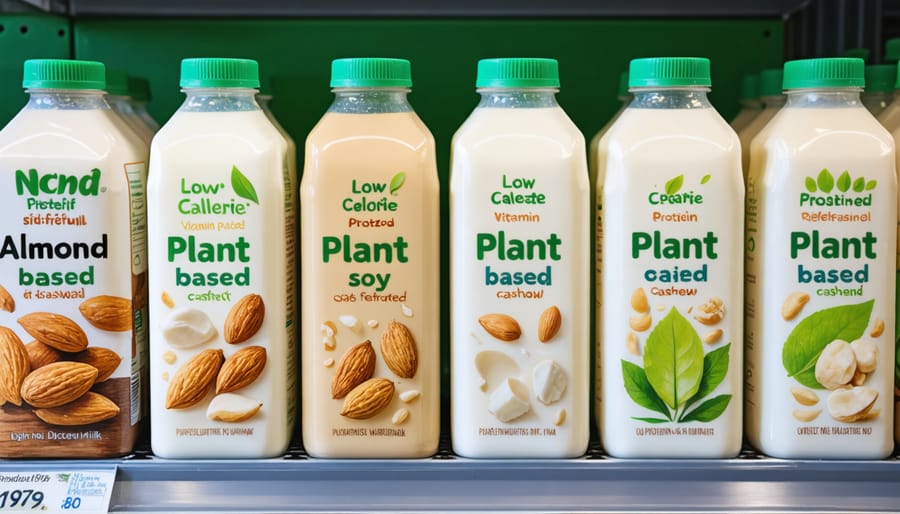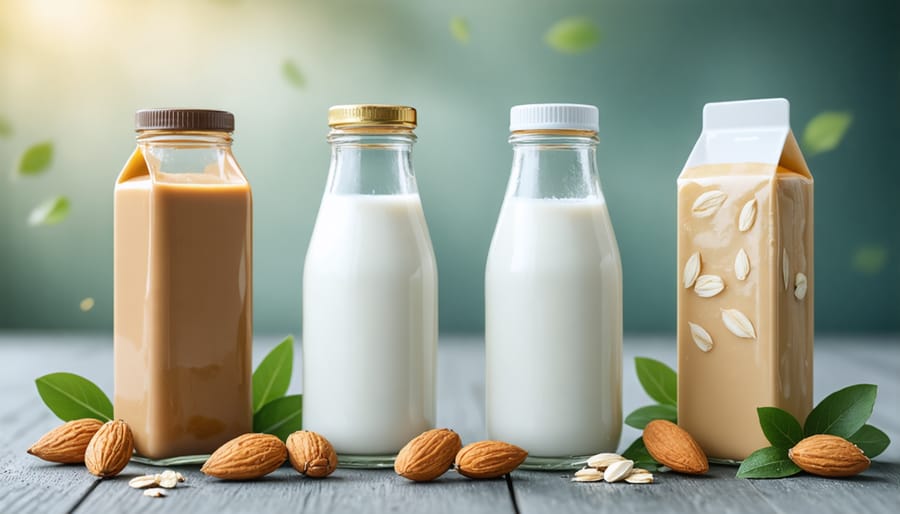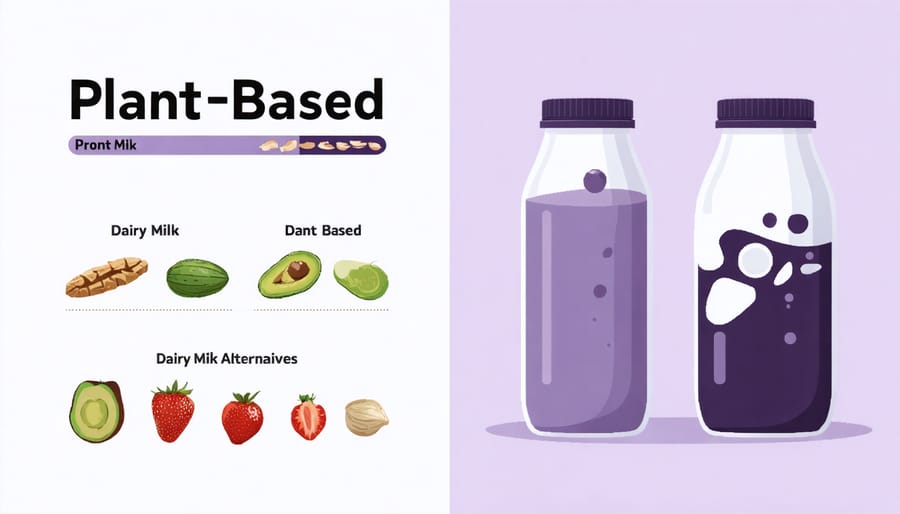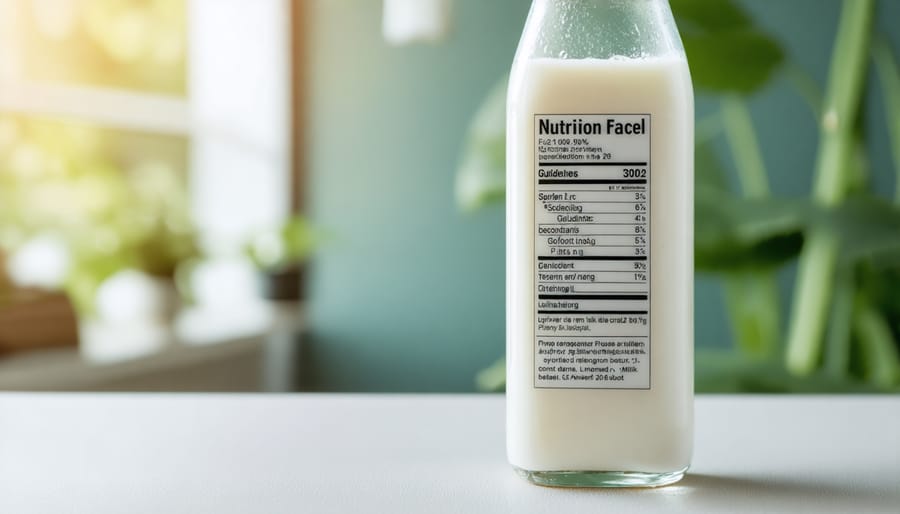
Standing in the grocery store’s milk aisle used to mean one simple choice – dairy or nothing. Today, that same aisle showcases an impressive array of plant-based alternatives, from almond and oat to soy and cashew milk. While making the switch to plant-based options can feel overwhelming, these milk alternatives offer exciting nutritional possibilities for both your health and the environment.
As a registered dietitian and someone who’s navigated this transition myself, I’ve witnessed firsthand how plant-based milks can support various dietary needs and lifestyle choices. Whether you’re lactose intolerant, environmentally conscious, or simply curious about expanding your nutritional horizons, understanding the health implications of these alternatives is crucial for making informed decisions about what goes in your shopping cart – and ultimately, your body.
Let’s explore what makes these dairy alternatives tick, and more importantly, how they stack up nutritionally against traditional dairy milk.

Popular Plant-Based Milk Options
Almond, Soy, and Oat Milk Compared
Let’s explore the three most popular plant-based milk options that I often recommend to my friends and family. Almond milk is a fantastic low-calorie choice, typically containing only 30-40 calories per cup. It’s perfect for those watching their caloric intake, though it does have less protein than dairy milk.
Soy milk is the nutritional powerhouse of the bunch. With about 7 grams of protein per cup and a complete amino acid profile, it’s the closest match to dairy milk’s nutritional profile. I particularly love how it performs in coffee and baking, making it my go-to for morning lattes.
Oat milk has become increasingly popular, and for good reason! It offers a creamy, slightly sweet taste that many find incredibly satisfying. While higher in calories than almond milk, it provides beneficial fiber and typically fortified with vitamins D and B12. The natural sweetness makes it perfect for smoothies and breakfast cereals.
Each option has its unique benefits, so I often keep multiple varieties in my fridge depending on how I plan to use them.
Lesser-Known Alternatives Worth Trying
While almond and oat milk often steal the spotlight, there’s a whole world of exciting plant-based alternatives worth discovering. I recently fell in love with cashew milk for its incredibly creamy texture and subtle sweetness – it’s perfect in morning coffee and makes heavenly smoothies without the nutty aftertaste some alternatives have.
Macadamia milk is another hidden gem that deserves more attention. It’s one of the creamiest non-dairy options available, with a naturally buttery flavor that works beautifully in baked goods. Plus, it’s rich in healthy monounsaturated fats, similar to those found in avocados.
Pea milk might sound unusual (I was skeptical at first too!), but it’s quickly gaining popularity for good reason. It packs an impressive protein punch – typically 8 grams per cup – and has a surprisingly neutral taste. It’s also an excellent option for those with nut allergies and tends to be more environmentally friendly than some other plant-based alternatives.
Don’t overlook hemp milk either – it’s rich in omega-3 fatty acids and has a unique earthy flavor that works wonderfully in savory recipes and smoothies.
The Real Nutritional Benefits
Protein Content: How They Stack Up
When it comes to protein, dairy milk has long been considered the gold standard, packing about 8 grams per cup. But how do plant-based alternatives measure up? Let me break it down for you – I remember being surprised by these numbers myself when I first started exploring dairy alternatives!
Soy milk is the clear winner among plant-based options, matching dairy milk with approximately 7-8 grams of protein per cup. This makes it an excellent choice for those of us looking to maintain our protein intake while moving away from dairy.
Pea milk is another protein powerhouse, offering 6-8 grams per cup, though it’s less commonly found in stores. Other options vary significantly: oat milk typically contains 3-4 grams, while almond milk usually has just 1-2 grams per cup.
Here’s something I’ve learned from experience: if protein content is important to you but you prefer the taste of lower-protein options like almond or coconut milk, you can always boost your protein intake in other ways. Try adding a scoop of protein powder to your morning smoothie or pairing your plant milk with protein-rich foods like chia seeds or nuts.
Remember, there’s no one-size-fits-all solution – the best choice depends on your individual nutritional needs and preferences. Many brands now offer protein-fortified versions of their plant milks, giving us even more options to choose from.

Vitamins, Minerals, and Fortification
When it comes to nutrients, plant-based milks have come a long way! Most manufacturers now fortify their products to match or even exceed the nutritional profile of dairy milk. I remember being amazed when I first learned how these alternatives could be such nutritional powerhouses with the right fortification.
Many plant-based milks are enriched with calcium, vitamin D, and vitamin B12 – nutrients traditionally associated with dairy milk. For example, a glass of fortified soy milk typically provides about 30% of your daily calcium needs and 15% of your vitamin D requirements. Some brands even add vitamin A, riboflavin, and zinc to further enhance their nutritional value.
It’s worth noting that different plant milks have their own unique natural benefits too. Soy milk offers complete protein, while almond milk is naturally rich in vitamin E. Oat milk provides beneficial fiber and beta-glucans, which are great for heart health.
However, not all plant-based milks are fortified equally. When shopping, I always recommend checking the nutrition label for these added nutrients. Look for options that provide at least 20% of your daily calcium needs and contain vitamin D and B12. This way, you’re ensuring you’re getting the most nutritional bang for your buck while enjoying your favorite dairy alternative.
What to Watch Out For
Added Sugars and Stabilizers
When I first started exploring plant-based milks, I was surprised to discover how many contained added sugars and stabilizers. While these ingredients aren’t necessarily harmful, they’re something to be mindful of if you’re seeking the healthiest options.
Many commercial plant-based milks include added sugars to improve taste, sometimes containing up to 7-12 grams per serving. Common stabilizers like carrageenan, guar gum, and gellan gum are used to prevent separation and create a creamy texture. While these additives are generally considered safe, some people prefer to avoid them.
Looking for the healthiest options? Here’s what I recommend:
– Choose “unsweetened” varieties
– Look for products with minimal ingredients
– Check for “no added sugars” on the label
– Consider brands that use natural stabilizers like sunflower lecithin
You can also make your own plant-based milk at home using just nuts or oats and water. It’s surprisingly easy, and you’ll have complete control over what goes into your drink. While homemade versions might separate more quickly, a quick shake before serving solves this issue.
Reading Labels Like a Pro
Let’s be honest – those plant-based milk labels can be a bit overwhelming at first glance! I remember standing in the grocery aisle, feeling totally lost among all the options. Here’s what I’ve learned about making smart choices:
First, scan the ingredients list. The fewer ingredients, the better! Ideally, you want to see the main plant source (like almonds or oats) near the top of the list. Watch out for added sugars, which might appear as cane sugar, rice syrup, or other sweeteners.
Check the protein content – this is especially important if you’re using plant milk as a dairy replacement. While soy milk typically offers around 7-8g of protein per cup, almond milk might only have 1g. Also, look for fortified versions with calcium and vitamin D, which typically provide similar amounts to dairy milk.
Don’t forget to check for unnecessary additives. While some stabilizers like gellan gum are generally fine, you might want to avoid artificial flavors and colors. And if you’re watching your calories, compare unsweetened versions – they can vary significantly between brands.

Making the Right Choice for You
Choosing the right plant-based milk doesn’t have to feel overwhelming! Just like how we all have different favorite coffee orders or breakfast routines, our ideal milk alternative depends on our unique needs and lifestyle. As someone who’s experimented with various options in my own kitchen, I’ve learned that making personalized nutrition choices is key to finding your perfect match.
Consider what matters most to you: Are you looking to boost your protein intake? Oat or soy milk might be your best bet. Watching your calories? Almond or cashew milk typically offers lighter options. For my coffee-loving friends, barista versions of oat and soy milk create that perfect creamy latte, while coconut milk adds tropical richness to smoothies and curries.
Think about your cooking style too. Some plant-based milks work better in certain recipes than others. I’ve found that oat milk makes heavenly pancakes, while almond milk is fantastic in overnight oats. For baking, soy milk often produces the best results due to its protein content.
Don’t forget to check the nutrition label! Look for options with minimal added sugars and check for fortification with calcium and vitamin D if those nutrients are important to you. It’s perfectly okay to keep different types on hand for different uses – I always have a barista blend for my morning coffee and a lighter option for smoothies.
Remember, there’s no one-size-fits-all solution. Feel free to experiment with different brands and varieties until you find your perfect match. The best choice is the one that makes you feel good and fits naturally into your daily routine.
As we’ve explored together, plant-based milks can be a healthy addition to your diet when chosen thoughtfully. While each alternative offers unique benefits, from protein-rich soy milk to calcium-fortified almond milk, the key is finding options that align with your nutritional needs and lifestyle choices. Remember to check those labels, prioritize versions with minimal additives, and consider how you’ll use these alternatives in your daily routine. Whether you’re lactose intolerant, vegan, or simply curious about exploring new options, there’s likely a plant-based milk that’s perfect for you. The most important thing is making an informed choice that feels right for your body and your values. Trust your instincts, experiment with different options, and don’t be afraid to mix things up – your perfect plant-based milk might be waiting to become your new favorite!



